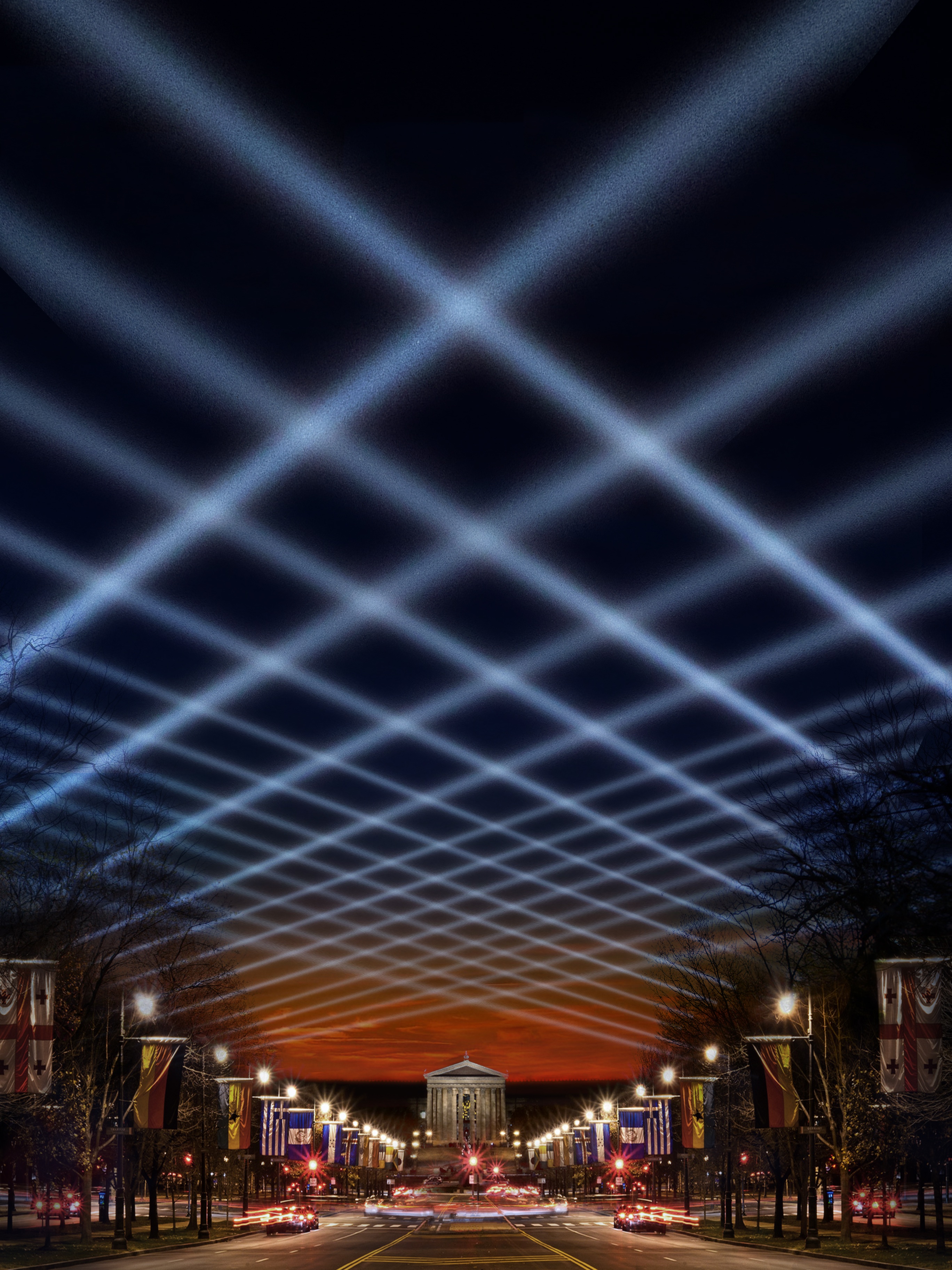Artist: RAFAEL LOZANO-HEMMER
Curated by JULIA COOKE
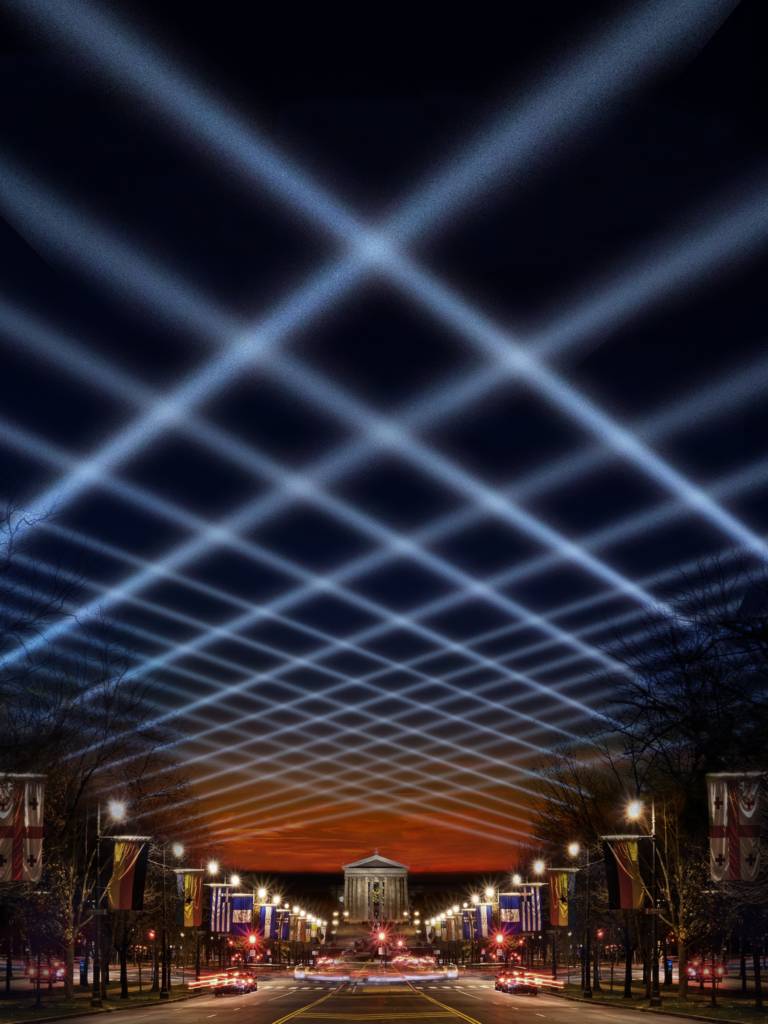
Rafael Lozano-Hemmer, “Open Air, Relational Architecture”, 2012. Commissioned by the Association for Public Art, Philad
Twenty-four searchlights, all high-powered, were set on rooftops around Philadelphia’s Benjamin Franklin Parkway last September and October. They were programmed, however, to avoid shining their spotlights on any physical objects: no buildings, no naked windows, no trees. Instead, they glimmered straight up into the sky: twenty-four columns of light responding — here solid, there faint, twitching and beating and sweeping across the sky together, then separating — to the voices of Philadelphia residents.
“Open Air,” an installation by Mexican-Canadian artist Rafael Lozano-Hemmer, used voice recordings that Philly residents left on his website to create abstract light sculptures that responded to the rhythms and cadences of each message. From eight until eleven every night for a month, people clustered on the grass of public plazas and the balconies of nearby buildings to watch these twenty-four searchlights in the night sky, interpreting the phrases that citizens wanted to share. Down below, at the project’s information center, the words themselves were played on loudspeakers in tandem with the lights. Together, the piece formed a patchwork portrait of a city’s residents and their preoccupations. Their voices and ideas were represented dually in floating sounds on the ground and glimmering pillars of light that intersected and then pulled apart over and over above the skyline.
What did people say? There were entreaties to hit the polls on November 6, marriage proposals, song lyrics, and squealing teenagers. Poetry was intoned in a scratchy male voice, and someone wished that the subway line that was supposed to have been built under the Parkway in 1926 would rumble under his feet.
This sort of project, defying easy classification and pulling a viewer into a memorable, intimate, and sometimes eerie experience of a place, is typical of Lozano-Hemmer’s work. In the first iteration of “Pulse Room” in 2006 — it has now been exhibited around the world — hundreds of incandescent bulbs were suspended in a grid from the ceiling of a room in Puebla, Mexico. The room was a defunct textile factory built in 1835, smelling of sawdust and redolent of itinerant workers, but the piece has also been shown in museums around the world. A sensor picks up each exhibit viewer’s heartbeat and transmits it to the bulb directly above him, only to be displaced and pushed down the line by the next person to grab the sensors. The result is a haunting room that twinkles with people no longer present. For 2012’s “Pulse Drip,” viewers watered the lawn at the Torre de Madariaga, in Spain’s northern Basque country, in spurts that mirror their heartbeats. For 2011’s “Tape Recorders,” installed at Sydney’s Museum of Contemporary Art, rows of motorized measuring tapes worked with a computerized tracking system to record the amount of time visitors spent in the installation room. And so on: always multidisciplinary, usually meditative, often surprising.

Rafael Lozano-Hemmer, “Open Air, Relational Architecture 19”, 2012. Commissioned by the Association for Public Art, Philadelphia, 2012. Photo by: James Ewing

Rafael Lozano-Hemmer, “Open Air, Relational Architecture 19”, 2012. Commissioned by the Association for Public Art, Philadelphia, 2012. Photo by: James Ewing
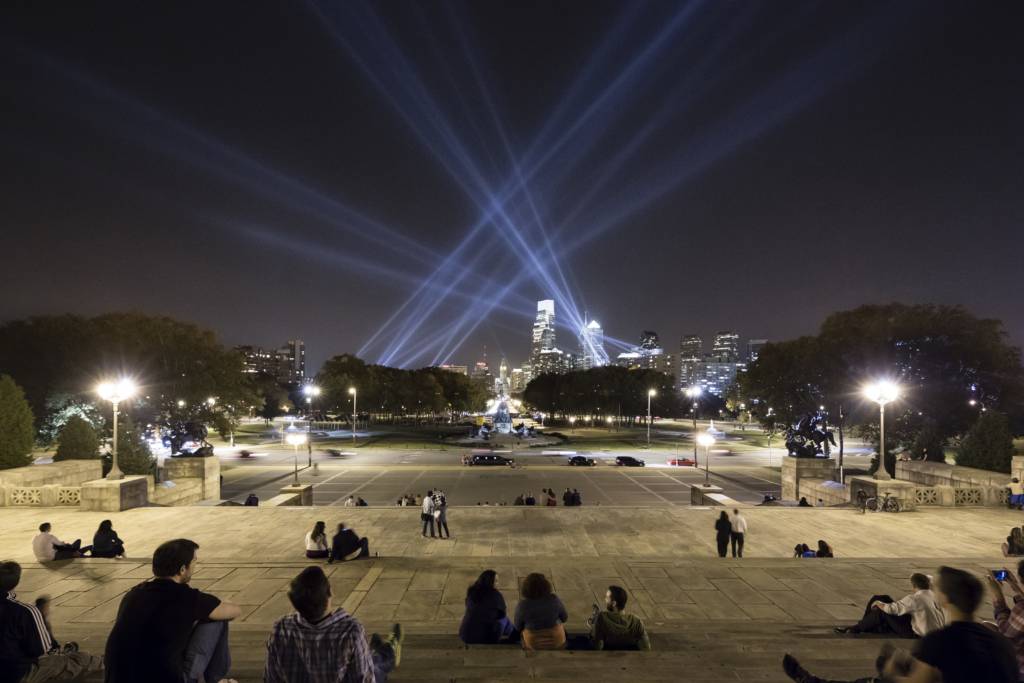
Rafael Lozano-Hemmer, “Open Air, Relational Architecture 19”, 2012. Commissioned by the Association for Public Art, Philadelphia, 2012. Photo by: James Ewing

Rafael Lozano-Hemmer, “Open Air, Relational Architecture”, 2012. Commissioned by the Association for Public Art, Philadelphia, 2012. Sketche by: Antimodular Research.

Rafael Lozano-Hemmer, “Pulse Room”, 2006. Fábrica La Constancia, Plataforma, Puebla, Mexico. Photo by: Alejandro Biazquez
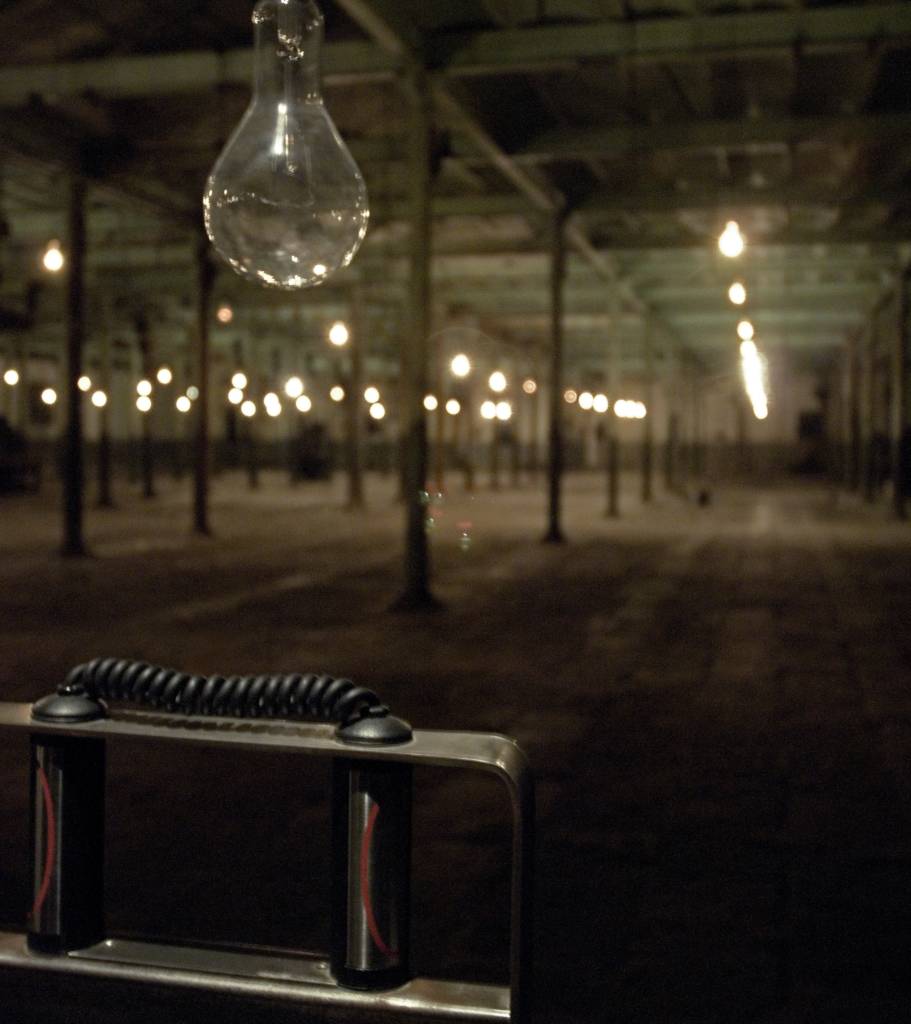
Rafael Lozano-Hemmer, “Pulse Room”, 2006. Fábrica La Constancia, Plataforma, Puebla, Mexico. Photo by: Alejandro Biazquez

Rafael Lozano-Hemmer, “Pulse Room”, 2006. Fábrica La Constancia, Plataforma, Puebla, Mexico. Photo by: Alejandro Biazquez
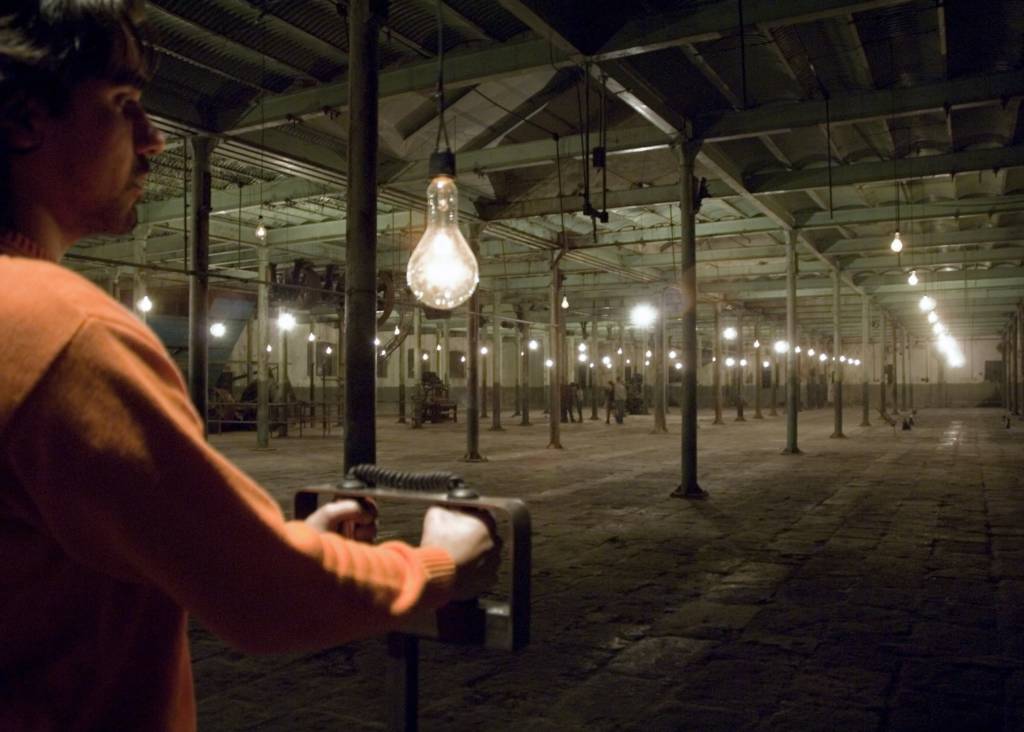
Rafael Lozano-Hemmer, “Pulse Room”, 2006. Fábrica La Constancia, Plataforma, Puebla, Mexico. Photo by: Alejandro Biazquez

Rafael Lozano-Hemmer, “Pulse Drip”, 2012. ”Sentido y sostenibilidad”, Reserva de la Biosfera de Urdaibai, Basque Country (Spain), 2012. Photo by: Antimodular

Rafael Lozano-Hemmer, “Pulse Drip”, 2012. ”Sentido y sostenibilidad”, Reserva de la Biosfera de Urdaibai, Basque Country (Spain), 2012. Photo by: Antimodular

Rafael Lozano-Hemmer, “Pulse Drip”, 2012. ”Sentido y sostenibilidad”, Reserva de la Biosfera de Urdaibai, Basque Country (Spain), 2012. Photo by: Antimodular
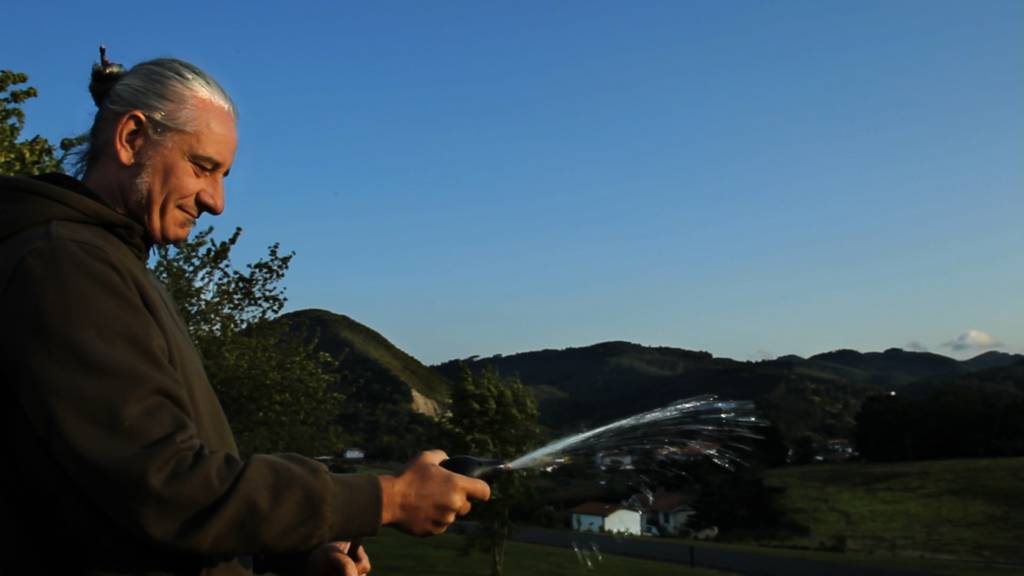
Rafael Lozano-Hemmer, “Pulse Drip”, 2012. ”Sentido y sostenibilidad”, Reserva de la Biosfera de Urdaibai, Basque Country (Spain), 2012. Photo by: Antimodular

Rafael Lozano-Hemmer, “Tape Recorders, Subsculpture 12”, 2010. “Recorders”, Museum of Contemporary Art, Sydney, 2011. Photo by: Alex Davies
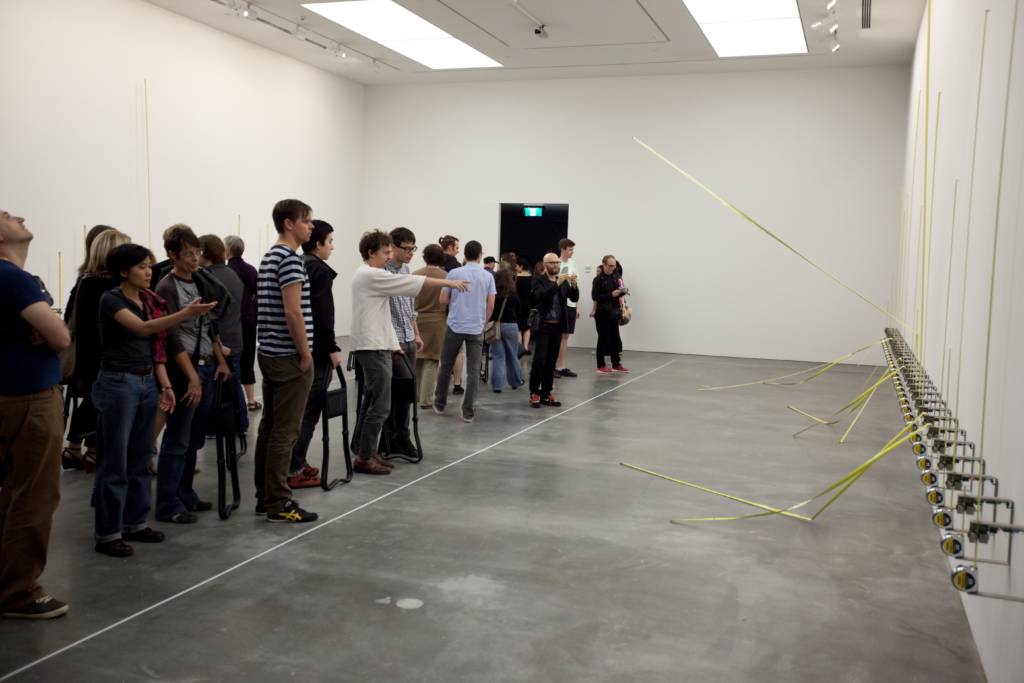
Rafael Lozano-Hemmer, “Tape Recorders, Subsculpture 12”, 2010. “Recorders”, Museum of Contemporary Art, Sydney, 2011. Photo by: Alex Davies

Rafael Lozano-Hemmer, “Tape Recorders, Subsculpture 12”, 2010. “Recorders”, Museum of Contemporary Art, Sydney, 2011. Photo by: Antimodular Research
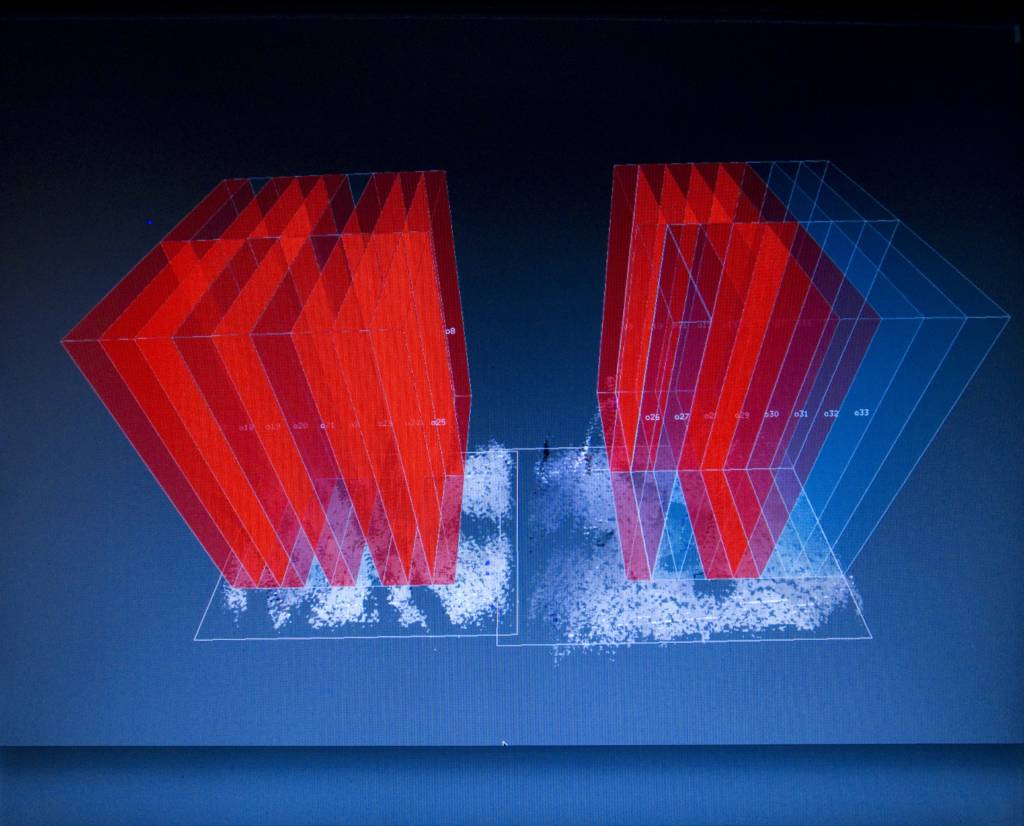
Rafael Lozano-Hemmer, “Tape Recorders, Subsculpture 12”, 2010. “Recorders”, Museum of Contemporary Art, Sydney, 2011. Photo by: Antimodular Research
Rafael Lozano-Hemmer’s work will be shown this spring at the North Carolina Museum of Art Raleigh and at the Virginia Arts Festival in Norfolk.
Julia Cooke’s art and culture writing has appeared in the Village Voice, Design Observer, and the Paris Review Daily.
